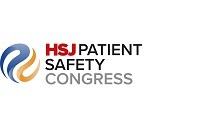The needs of children must be embedded in the work of integrated care systems, with particular focus required on young people with special educational needs or disabilities, writes James Swaffield
![]()
This is paid-for content from our commercial partners. Find out more
Since 2019 the Department for Education has been undertaking a major review into support for children with special educational needs and disabilities (SEND), in collaboration with the Department of Health and Social Care. The review is looking at how the SEND system has evolved and how it can be made to work best for all families and ensure quality of provision is the same across the country.
Sponsored by
In parallel, £1.5 billion has been spent on High Needs (covering children with SEND, children in alternative educational provision, and children who have been excluded from school) over the last two years. Yet the number of Education Health and Care Plans (EHCPs) and their associated costs continues to increase, leading to forecast overspends in High Needs this year of over £600 million across local government.
As Dame Christine Lenehan (Director of the Council for Disabled Children at the National Children’s Bureau) and Leo Jones (Director, IMPOWER) concluded in a recent article, “This shows that money alone isn’t the answer; the system needs a reset across a number of areas.” This clarion call is even more urgent given the impact on demand that COVID-19 and disrupted schooling has had, and how this will play out through recovery.
Why is this important?
In the February White Paper (Integration and innovation: working together to improve health and social care for all) children are mentioned just four times – once around public health services for children in secure and detained settings, and twice in relation to obesity. The annex of the paper on stakeholder engagement doesn’t list a single organisation dedicated to children and young people.
Despite this, the paper’s stated ambition is to address the “needs of everyone, from children to older people, at different stages of their lives”. So why the material disconnect between the ambition and the document’s content?
High Needs is a perfect example of an issue that should be high up the priority list for every ICS. It is already a priority for the majority of local authorities. If a place-based, collaborative response to the challenge of rising demand in High Needs is not forthcoming, how can systems look to address the needs of everyone? Ensuring the best outcomes for those with SEND from the beginning is crucial to their health and wellbeing.
To quote the Local Government Association, “This White Paper provides a promising base on which to build stronger working relationships between local government and the NHS, as equal partners, to address the wider determinants of health and deliver better and more coordinated health and care services.” Given this, isn’t building a collective response to High Needs one of the first real tests to the ‘Duty to Collaborate’ that will come through the legislation?
So, what can be done?
We recently brought together Directors of Children’s Services and the Department for Education for a roundtable discussion on High Needs, and the response from those working in the sector was clear. To achieve better outcomes for our children and young people, there must be:
- A greater focus on independence for children and young people with additional needs, and on preparing for adulthood from day one;
- A shift to earlier intervention, changing the cultural belief that an EHCP is a ‘golden ticket’ for support and provision;
- The right accountability frameworks in place, and a financially sustainable system, and;
- A greater focus on inclusion in mainstream settings, supported by the right funding and accountability.
Delivering this for an ICS means communicating better together to drive the best outcomes for children, young people, families and carers. There is a need for much earlier dialogue between parents, schools, health and local councils where early need arises; when such dialogue happens effectively, the results can be very positive.
There also needs to be common training and a ‘strengths-based’ approach to discussions across all professionals – from social workers through to health visitors.
Lastly, at an ICS level the right accountability framework and understanding of demand from early years onwards must be embedded. Doing so will put children at the centre of each ICS, wrapping care and support around universal provision – such as schools – to support greater aspiration and independence for children with SEND.
High Needs is a perfect storm and needs to be top of each ICS’s agenda. If it isn’t handled well by systems and places, it will impact wellbeing now and for many years to come. Conversely, it also provides an ideal opportunity to prove how effective collaboration can lead to better outcomes that cost less. If your ICS doesn’t already have a Children and Families programme, it is time to ask why.





























